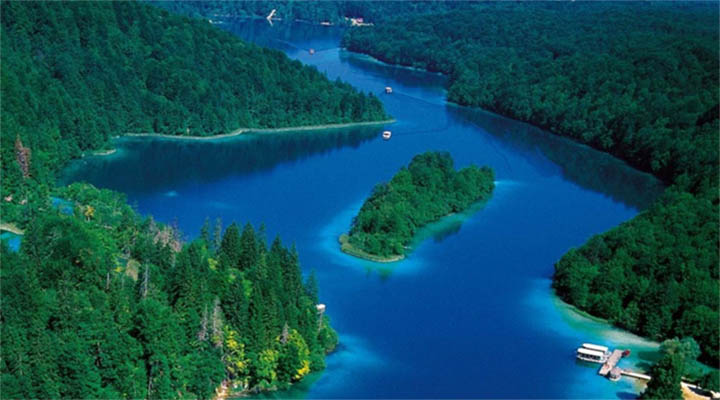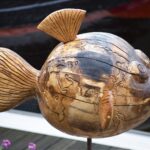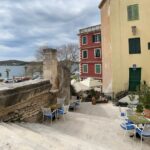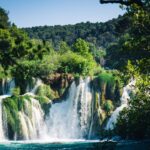Croatia is a very popular destination for summer holidays and tourist from all over Europe and from other countries around the world visit in droves, especially in July and August, peak times for visiting National Parks, and Krka National Park can get very busy. The warm temperatures, rising up to 35˙C, are perfect for swimming inside Krka.
Shoulder season is April through June and September through October. The beauty of National Parks does not abate during other seasons. If you are here, in Croatia, in the low season, you will enjoy wildflowers, nice sunny weather, autumn leafage, magical winter silence. And there is a benefit of a few other tourists. Could not be better! Every National Park in the country provides something unique and undiscovered beauty.
Unique and undiscovered beauty
On a sunny day, there is really no better place to be. Lie on the grass listening to the waterfalls, looking at butterflies, nature…Who needs islands, caves, beaches when you have all this in one place? If you like swimming in the waterfalls, then your best choice will be Krka tour from Split, the youngest of all Croatia National Park, established just in 1985. Krka is smaller than Plitvice Lakes therefor you have enough time to visit all Krka National Park in one day.
But if you decide to Visit Krka National Park in the winter, you will be probably there alone as there are not that many people visiting Krka National Park during that period of a year. A very pleasant way to view the falls. You will see a difference in the amount of water going down the falls compared when are you at this place during summer.
A tour of the Park in the winter months provides peace and visitors can get to know more about everything that the National Park offers.
Krka National Park – an area of exceptional natural value
For example, at Krka National Park there are always activities you can engage in. Such as hiking trails, sightseeing tours, boat trips, restaurants. Along the hiking trails, there are several resting places like benches and educational panels with information about plants, animal species characteristic for the Krka National Park, geological phenomena and cultural prehistoric sites. Krka waterfalls lie within Šibenik – Knin County and covers a total area of 109 square kilometres of the loveliest sections of the Krka river, and the lower course of the Čikola River. The Krka National Park Is an immense and primarily unaltered area of exceptional natural value. The second highest density of lavender in Europe, exceptionally rich and varied flora and fauna, eight hundred and sixty pieces and subspecies of plants, eighteen species of fish inhabit the Krka River. The list of valued sights keeps continuing… Also, the public institution Krka National Park organise every year in the winter organised tour for places Skradinski Buk and Roški waterfall.
Skradinski buk is the most famous and the most visited waterfall in National Park. Stunning seventeen staircase waterfall is just one of many interesting places hidden in this area.
Approximately 14 kilometres from Miljacka slap you will see Roški slap. The sixth cascade on the Krka River.
We guarantee that you will be absolutely blown away by stunningly beautiful waterfalls no matter the season.




